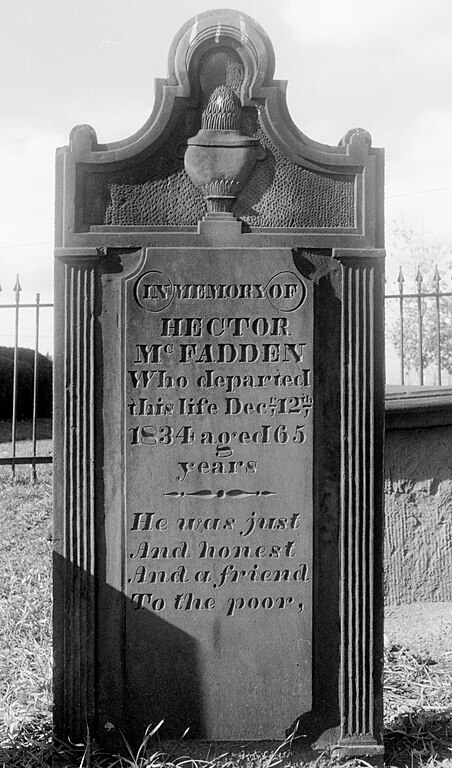 Three different burials in the same family plot show us three different styles of early-settler tombstones.
Three different burials in the same family plot show us three different styles of early-settler tombstones.
Jacob Bell lived the longest of the three: he was buried in 1842. Shortly after that, local stonecutters would begin to be replaced by more centralized businesses, so this is one of the last of what Father Pitt would call the early-settler tombstones. It does not seem as elegantly cut or proportioned as the earlier tombstones, which makes us wonder whether the stonecutter’s craft was already fading. The inscription reads:
SACRED to the MEMORY OF JACOB BELL, Who departed this life, Nov. 18th 1842 in the 75th year of his age.
 Elizabeth Bell, Jacob’s “consort” (the stonecutters’ preferred term for “wife”), died in 1829, and her tombstone is typical of the time. It is not as elaborately cut as some other 1820s tombstones, but compare it to Jacob’s and see how much better formed the individual letters are, and how much more carefully laid out the lines are in the inscription.
Elizabeth Bell, Jacob’s “consort” (the stonecutters’ preferred term for “wife”), died in 1829, and her tombstone is typical of the time. It is not as elaborately cut as some other 1820s tombstones, but compare it to Jacob’s and see how much better formed the individual letters are, and how much more carefully laid out the lines are in the inscription.
IN Memory of ELIZABETH BELL, Consort of JACOB BELL Who departed this life January 13th A.D. 1829 in the 58th year of her age.

Finally, Charity Bell, who was probably a daughter of Jacob and Elizabeth, died in 1832, and was given a tombstone of the Gothic shape popular in the 1830s. The lettering is done very well (non-standard spelling of the month notwithstanding), and the stonecutter has added the tree ornament—probably intended as a weeping willow—that we commonly see on early-settler tombstones.
IN MEMORY OF CHARITY BELL Who departed this life Aprile the 6th A.D. 1832 in the 35 year of her age







